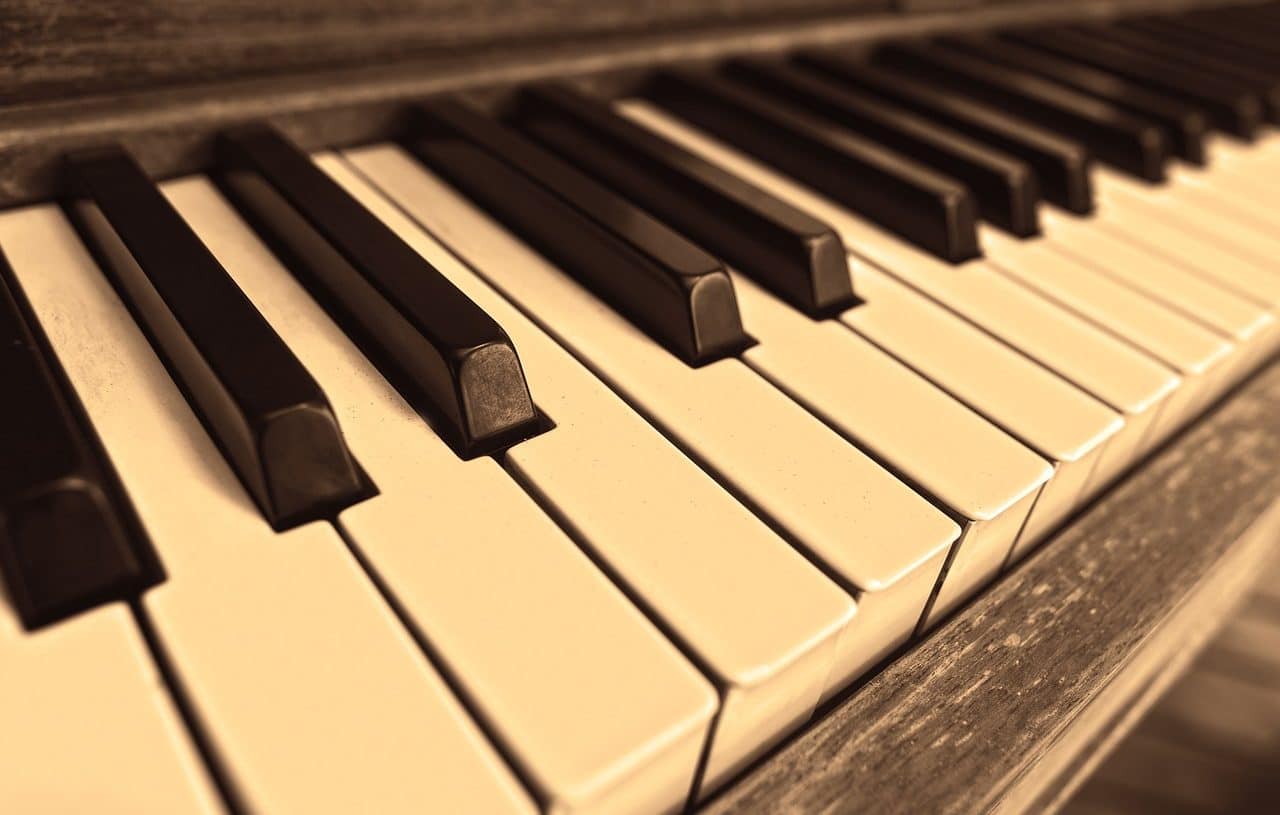
The piano is a musical instrument .
The piano is an instrument used to create and play music from a keyboard that drives strings . The term comes from the Italian pianoforte .
When the pianist (the person who plays the piano) presses a key, the instrument's internal mechanism causes it to strike a particular string, producing the sound. Thanks to the piano pedals , it is even possible to modify the sound characteristics.
History of the piano
It is said that the piano was invented by Bartolomeo Cristofori at the beginning of the 18th century , having as its closest antecedents instruments such as the harpsichord and the zither . Over time, different types of pianos were developed, including the upright piano and the grand piano .
Historical figures such as Ludwig van Beethoven , Wolfgang Amadeus Mozart and Frederic Chopin are among the greatest composers and performers of piano works.

The piano keyboard allows you to drive the strings that generate the sound.
The pedals
Grand pianos usually have three pedals. The first of them is called unicord , celeste or una corda , and is located on the left. Its function is to move the hammers to one side so that, according to the adjustment they have received, they hit the part of the felt where they do not usually do so and on two of the three strings.
The sound resulting from using the unichord is smaller in terms of attack; In addition, the string that is not struck emits sympathetic vibrations, which modifies the timbre, causing its color to change and the note to last longer, be sweeter and more uniform than usual.
The middle pedal of the piano is known as the sostenuto , central or tonal and is used to produce the effect called pedal note , which sustains a note or chord for a longer time than normal. To achieve this effect you must press the note(s) and only then press the pedal; The keys can then be released, as their notes will continue to sound. It should be noted that the sound of the pedal note is not altered by those that are executed subsequently, unlike what happens with the damper pedal.
The third pedal, located on the right, is the resonance pedal, and when pressed it releases the string dampers, which causes the notes to continue sounding when the keys are stopped being pressed. This adds a large number of harmonics, thanks to the sympathetic vibration of other strings, and thus increases the volume of the sound. Using the damper pedal allows you to mix chords, harmonies and notes, but can also give rise to subtle phrasing and expressive effects.
Unlike the sostenuto pedal, the resonance pedal adds the notes that are played to those that have been affected by its action, and therefore requires deep musical knowledge to avoid an incorrect or unpleasant combination of sounds. It is, on the other hand, the pedal that is most used.
Piano tuning and use
To tune a piano, it is necessary to analyze and, if necessary, modify the tension of each string. The vibration of the strings must be specified at a precise frequency, guaranteeing the purity of the sound .
It is possible to use the piano in various musical genres. What we know today as classical music , with its symphonies and operas, usually gives great importance to the piano. Jazz and symphonic rock also give a prominent role to this instrument.
an expression
Since piano, in Italian, means "soft" or "slow" , in our language the expression piano piano is usually used to refer to something that must be done step by step or calmly.
"Don't hurry: advance piano piano, safely, and things will turn out well for you" is a phrase that shows this use.
